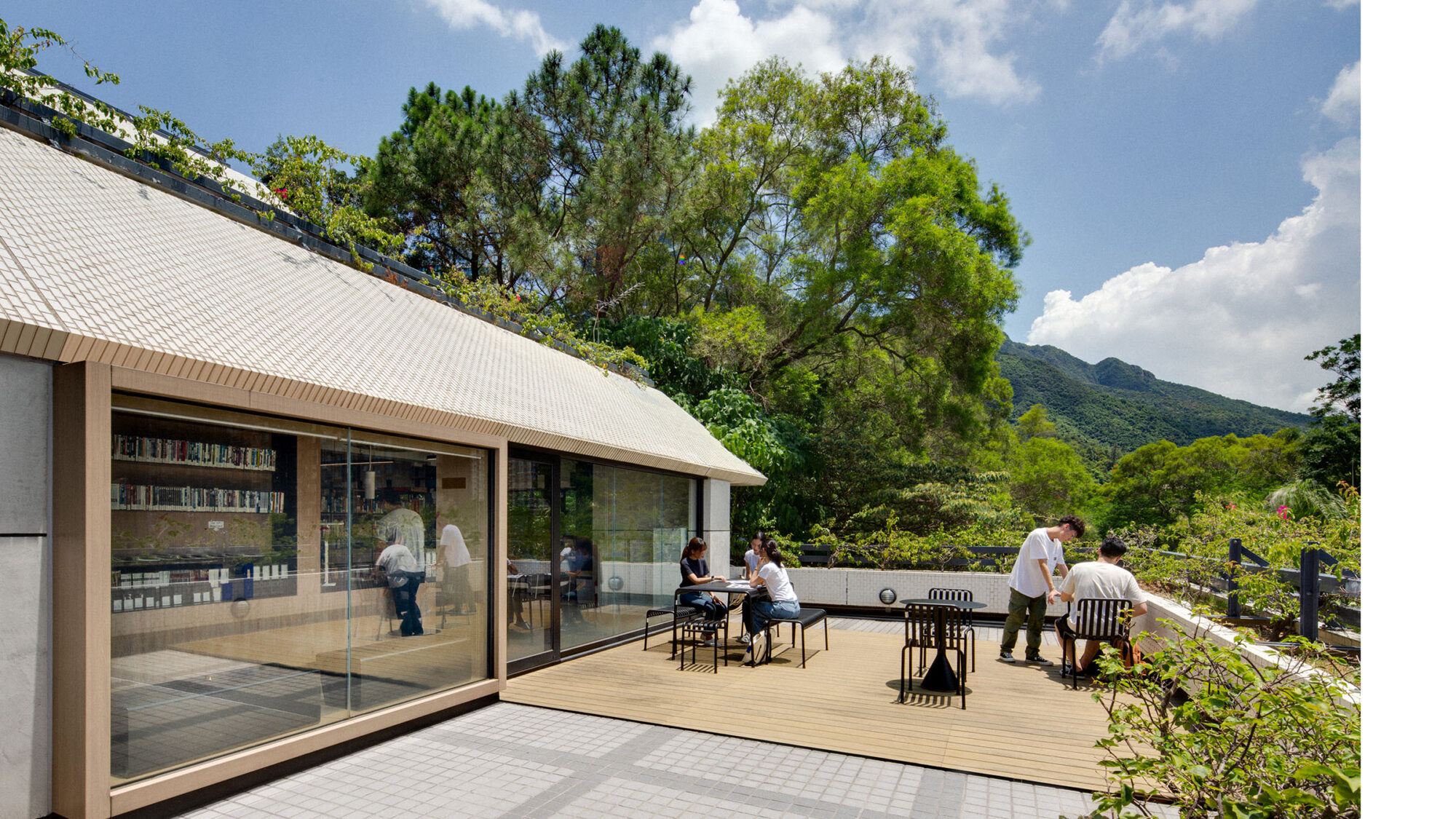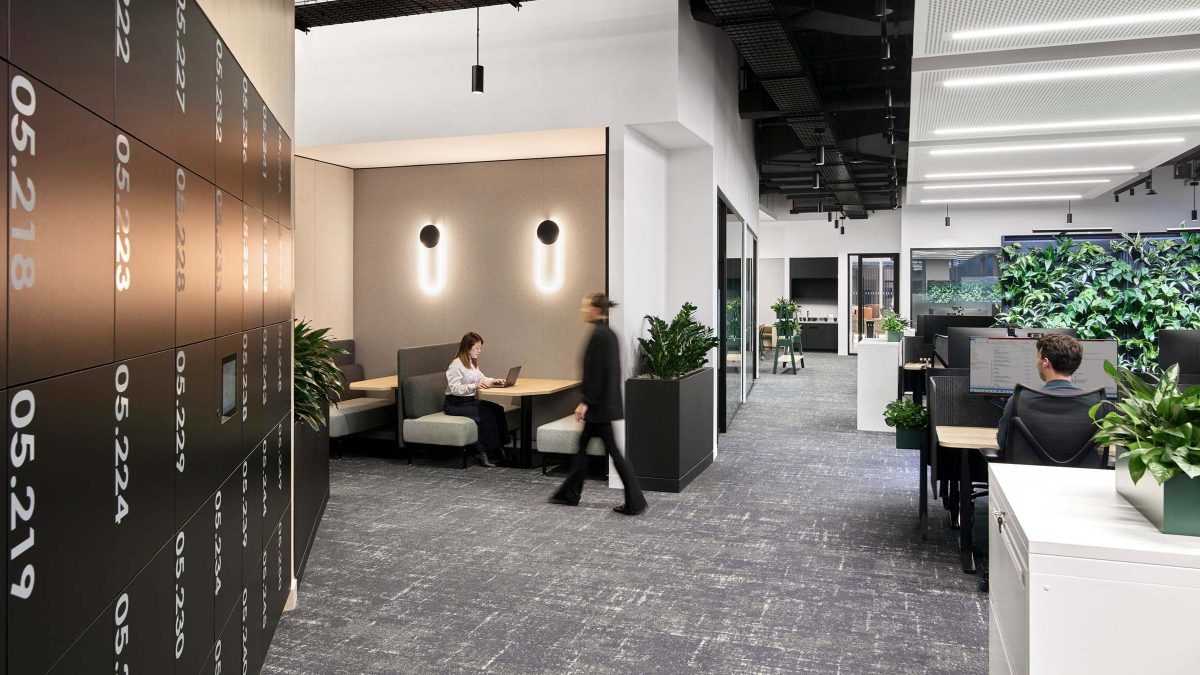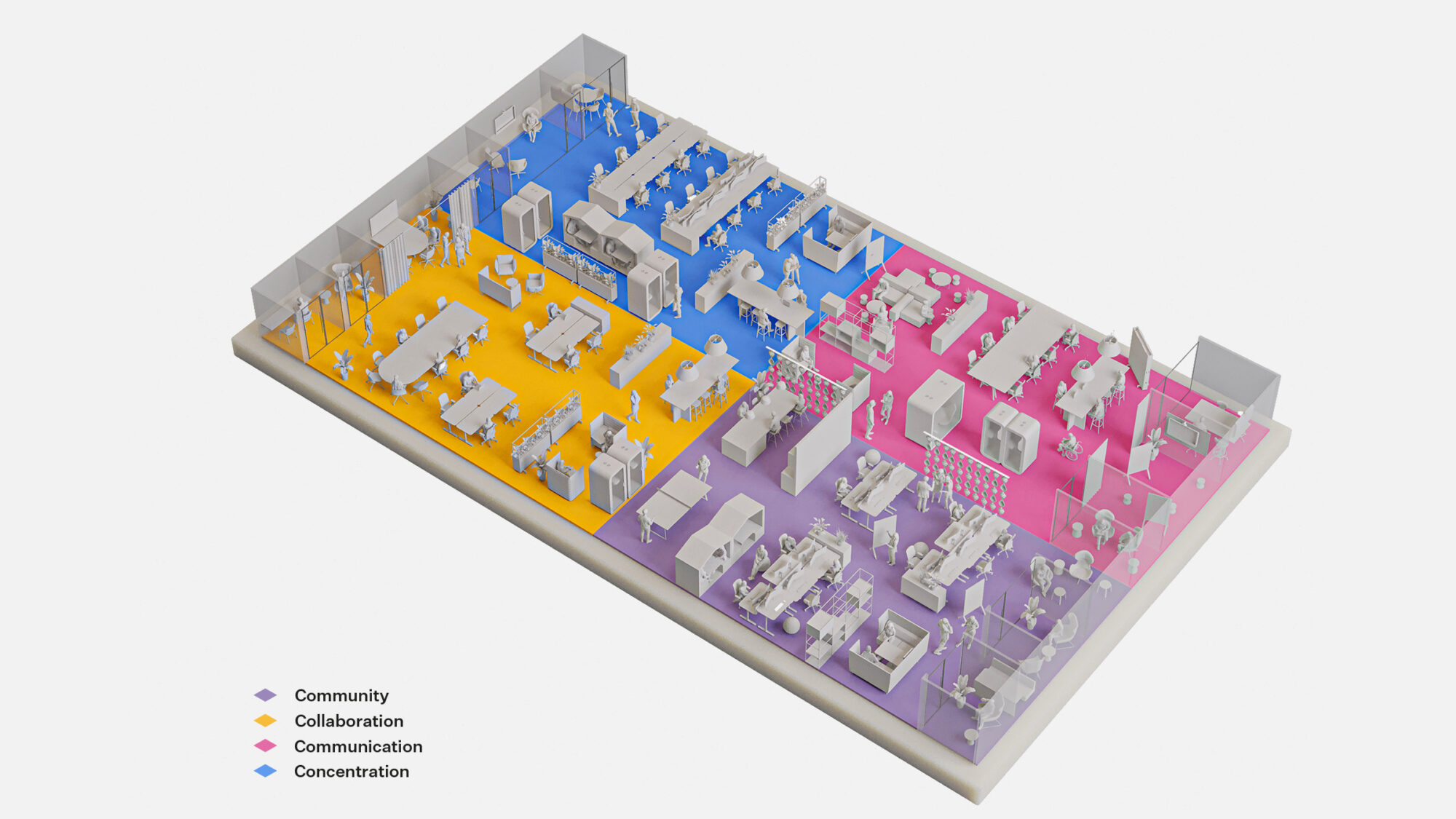










In New York City, where innovation and diversity converge, neurodiversity is gaining prominence in workplace strategy and design. Neurodiversity acknowledges the broad range of differences in brain function and personality traits among individuals. With an estimated 20% of the population considered neurodivergent, the need for inclusive design strategies has become crucial. These strategies cater to varying cognitive styles and are essential in creating workplaces that support productivity and employee wellbeing.
This article explores how our team at M Moser is designing NYC Offices for all.


Designing for neurodiversity requires a deep understanding of individual behavior and recognizing that traditional office environments may not suit everyone. As workplace design companies evolve, they are moving beyond one-size-fits-all solutions. The emphasis is now on creating environments that offer choice and flexibility, allowing each employee to thrive according to their unique needs.
Inclusive design strategies often incorporate a variety of spaces that cater to different preferences and work styles. For instance, while one employee might excel in a low-stimulation environment designed for hyper-focus, another might benefit from vibrant social spaces. Consequently, each space style can encourage collaboration and creativity.
By considering these diverse needs, our workplace interior designers are leading the way. They are creating inclusive office environments that support all employees, regardless of their neurodiverse characteristics.


To truly accommodate neurodiverse employees, office design must prioritize human-centric solutions that enhance both productivity and wellbeing. This includes creating quiet rooms for intense concentration, low-traffic areas to reduce social anxiety and active zones to encourage movement. The integration of materiality and lighting also plays a pivotal role. Careful attention is given to how these elements can cue behaviors and set the tone for different workspaces.
One of the best practices for neurodiverse office design is to minimize the appearance of differences among employees. Offering a range of spaces that cater to various needs can create environments where everyone feels empowered to work effectively. The goal is to provide choice. This ensures that every employee can find a workspace that suits their individual preferences and work style.
On the surface, a neurodiverse workspace might resemble a typical office. However, by analyzing the needs of four distinct personas, we can better understand how these varied requirements are seamlessly integrated into the overall design.

Designing a neuro-friendly office involves understanding the specific needs of different neurodiversity groups. For example, workplace interior designers make note of the following:
Neurodivergent employees: These employees often excel in focused work and creative problem-solving. They may require distraction-free workspaces and smaller, intimate collaboration zones that support one-on-one interactions.

Sensory sensitive employees: Highly perceptive and reflective, these individuals benefit from clear and planned changes in their environment. They thrive in spaces that offer a balance of concentration areas and community spaces where they can engage in small group interactions.

Neurotypical employees: These employees usually perform well in multi-purpose, open spaces that encourage spontaneous collaboration and minimal sensory input. Their adaptability allows them to work effectively in less structured environments.

Sensory seeking employees: These individuals are energized by vibrant, open spaces that facilitate communication and connection. They prefer settings that support a variety of communication styles, from individual calls to group discussions.

The environment in which employees work significantly influences their performance and wellbeing. In NYC, where the pace of work is fast and demanding, creating a supportive office environment is essential. By incorporating inclusive design strategies, workplace strategy and design teams can ensure that spaces are not only functional but also cater to the diverse needs of all employees. This approach not only improves productivity but also fosters a sense of belonging and inclusivity.

In a city as diverse as New York, workplace inclusivity should be at the forefront of every organization’s priorities. By embracing neurodiversity and integrating inclusive design strategies, companies can create work environments that empower all employees to contribute to their fullest potential. The result is a more innovative, productive, and cohesive workplace where differences are celebrated and everyone can thrive.
For organizations looking to enhance their workplace strategy and design, partnering with experienced workplace design companies is key. As experts, we can provide the guidance needed to create neurodiverse-friendly offices. These spaces can reflect the unique culture and needs of your company, ultimately leading to greater success.
Contact our workplace strategy team to explore how you can create a more inclusive workspace that supports neurodiversity and wellbeing.